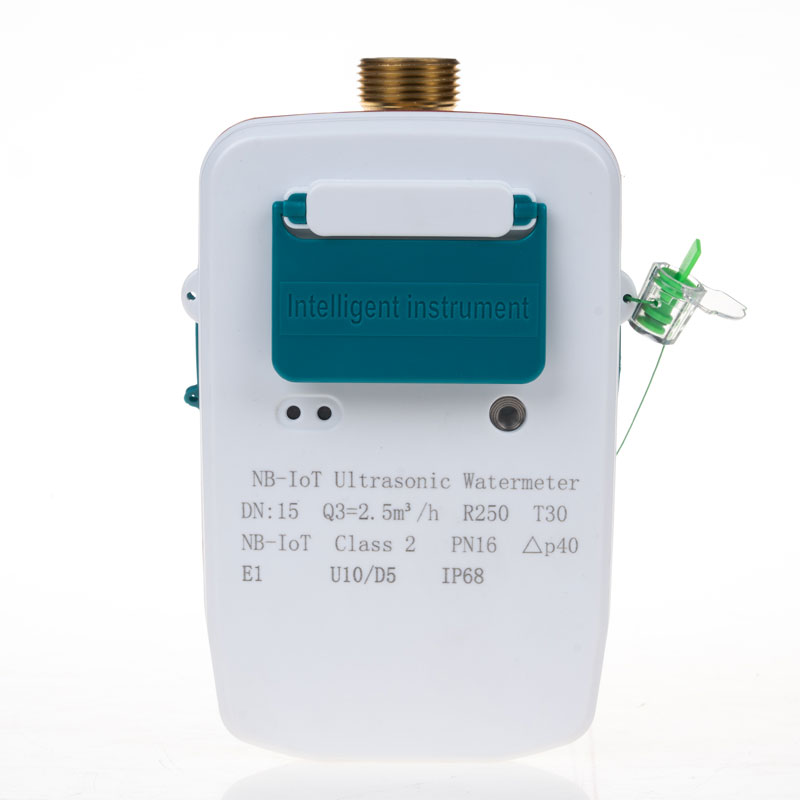- English
- Español
- Português
- русский
- Français
- 日本語
- Deutsch
- tiếng Việt
- Italiano
- Nederlands
- ภาษาไทย
- Polski
- 한국어
- Svenska
- magyar
- Malay
- বাংলা ভাষার
- Dansk
- Suomi
- हिन्दी
- Pilipino
- Türkçe
- Gaeilge
- العربية
- Indonesia
- Norsk
- تمل
- český
- ελληνικά
- український
- Javanese
- فارسی
- தமிழ்
- తెలుగు
- नेपाली
- Burmese
- български
- ລາວ
- Latine
- Қазақша
- Euskal
- Azərbaycan
- Slovenský jazyk
- Македонски
- Lietuvos
- Eesti Keel
- Română
- Slovenski
- मराठी
- Srpski језик
Why Do Ultrasonic Water Meters Outperform Traditional Systems?
2025-11-24
The ultrasonic water meter represents a quiet revolution in the field of flow measurement. It detects the time difference caused by the change in speed of an ultrasonic beam as it propagates upstream and downstream in water, analyzes this data to determine the water velocity, and then calculates the flow rate. This technology is changing the way cities conserve water, factories monitor coolant levels, and detect leaks in homes.
How Ultrasonic Meters Measure Without Touching Water
| Technology | Mechanical Meters | Ultrasonic Meters |
|---|---|---|
| Measurement | Spinning turbine disturbs flow | Sound waves cross fluid undisturbed |
| Accuracy | ±2% (degrades with wear) | ±0.5% (lifelong ±1% even at low flow) |
| Lifespan | 5-8 years (impeller erosion) | 15+ years (no internal contact) |
| Maintenance | Annual cleaning/calibration | Self-diagnosing (alerts for bubble issues) |
Advantages of Ultrasonic Water Meters:
1. No Impeller, No Problem of Accidents:
Traditional water meters rely on water flow to drive an impeller for measurement. Over time, sediment and rust can accumulate in the water, causing the impeller to jam or slow down, affecting measurement accuracy. Ultrasonic water meters calculate flow rate by detecting the time difference of ultrasonic waves traveling through water. With no moving parts, they fundamentally avoid clogging problems, making them particularly suitable for scenarios with complex water quality or significant residual impurities after pipe construction.
2. More Accurate Measurement, Detecting Even Small Flows:
Ultrasonic water meters have extremely low starting flow rates, capable of detecting minute flows of just a few liters per hour. This means that even minor leaks, such as toilet tank leaks or slow seepage at pipe joints, can be recorded. For water supply companies, this helps reduce the "production-sales gap" and improve water resource management efficiency.
3. Longer Lifespan, Easier Maintenance:
Due to the absence of mechanical wear, ultrasonic water meters typically have a lifespan of over 12 years, far exceeding the 6-8 years of ordinary mechanical meters. Meanwhile, it supports IP68 protection and NB-IoT/4G remote transmission, enabling long-term stable operation in damp well chambers, reducing maintenance frequency and replacement costs.
4. Suitable for Intelligent Management Needs:
Ultrasonic water meters inherently possess digital capabilities, offering high data acquisition accuracy and fast response. They can seamlessly integrate with smart water management platforms, enabling remote meter reading, anomaly alarms, and data analysis. They are becoming the preferred solution in smart parks, high-rise residential buildings, schools, hospitals, and other locations with high water management requirements.
5. Higher Price, but More Cost-Effective in the Long Run:
Currently, the unit price of ultrasonic water meters is higher than traditional water meters. However, considering their long lifespan, low failure rate, and high management efficiency, the overall cost of use is lower. Especially in projects with high requirements for metering accuracy and system stability, their cost-effectiveness is significant. As urban water supply management requirements increase, ultrasonic water meters are moving from a "high-end choice" to "mainstream application." It's not a gimmick, but a genuine technological upgrade that solves the pain points of water metering. If you are involved in water supply system renovation or new construction projects, you might consider using it.

Frequently Asked Questions
Q: Will sand or debris damage the ultrasonic water meter?
A: No, because there are no moving parts, the ultrasonic water meter is unaffected by sand in well water, calcium deposits in hard water, and scale debris from pipe repairs.
Q: How accurate are they at measuring the flow rate of a dripping faucet?
A: The ultrasonic water meter can detect flow rates as low as 1/10 of a typical drip, up to 9 times faster than a mechanical flow meter, allowing it to detect leaks before they cause structural damage.
Q: Can they handle air bubbles in the pipes?
A: Advanced algorithms can distinguish between air and water; they feature a foam resilience mode, automatic bubble volume recording, and flow correction for transient cavitation.
Q: Do they require power during power outages?
A: Backup batteries with a lifespan of over 10 years ensure continuous monitoring, backflow event recording, and automatic hourly readings during power outages until power is restored.


